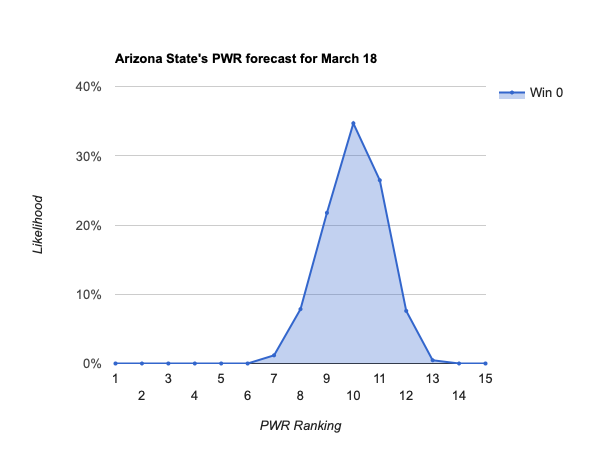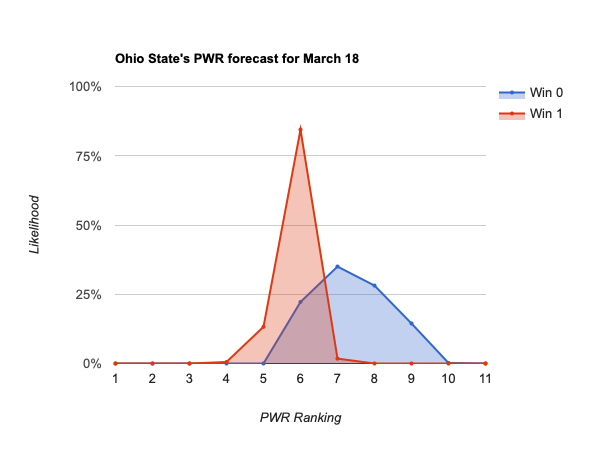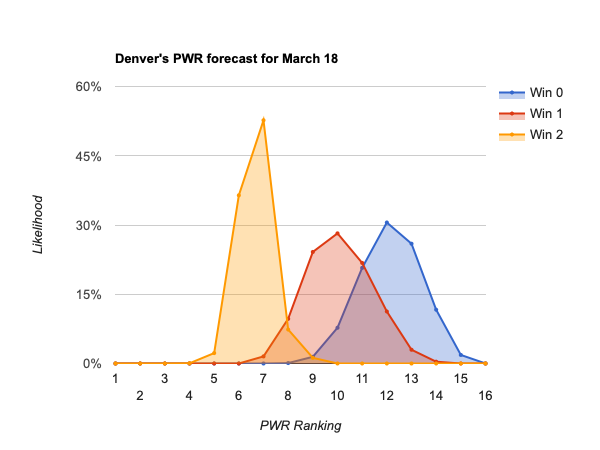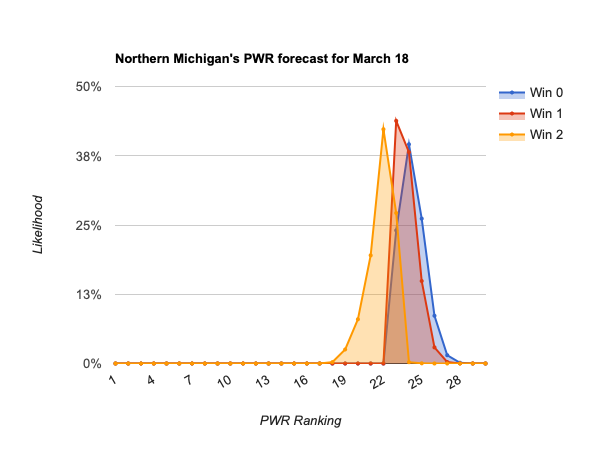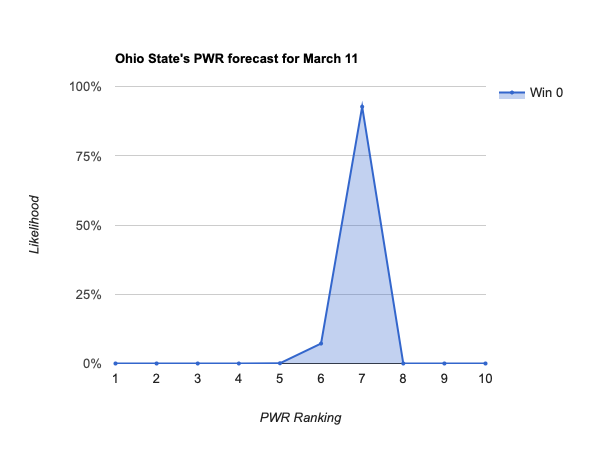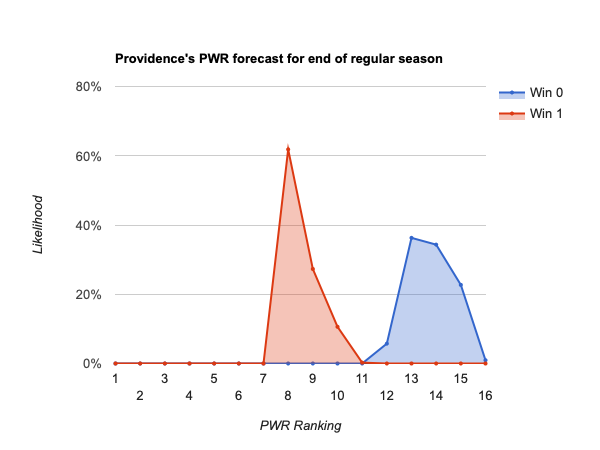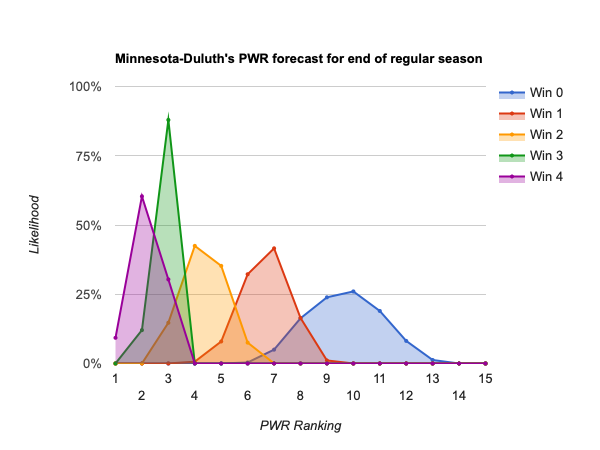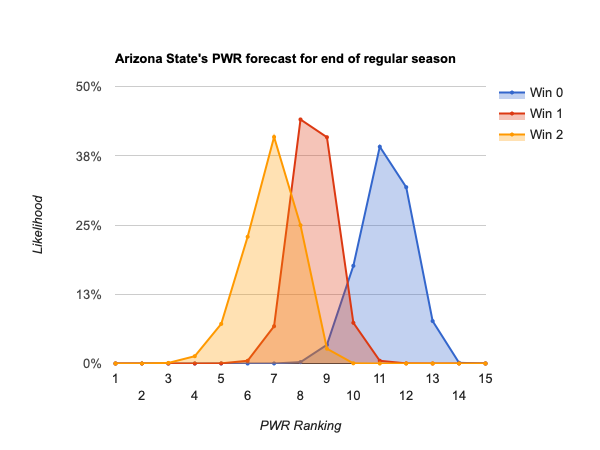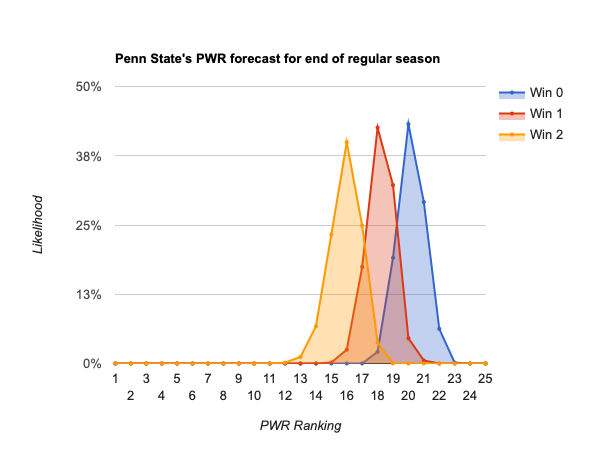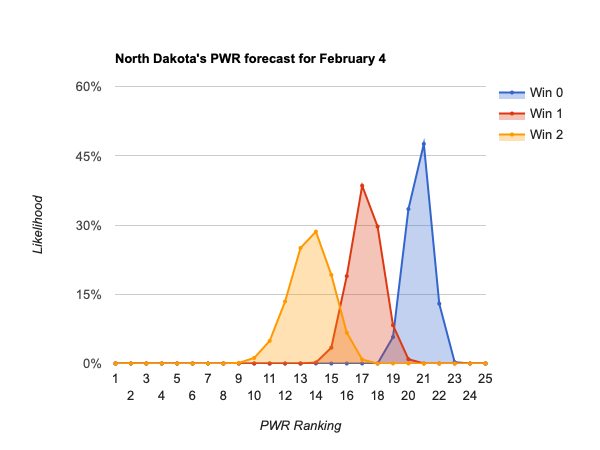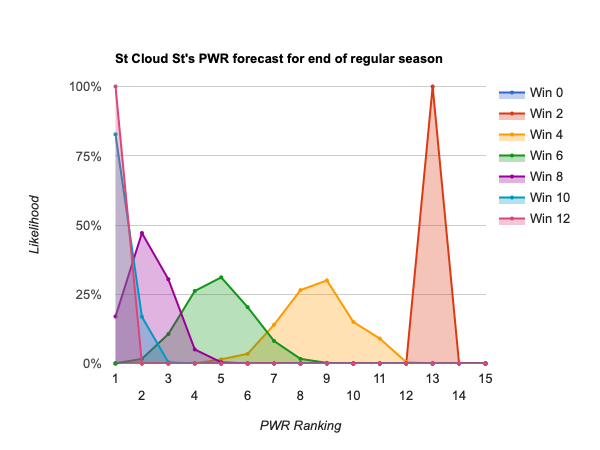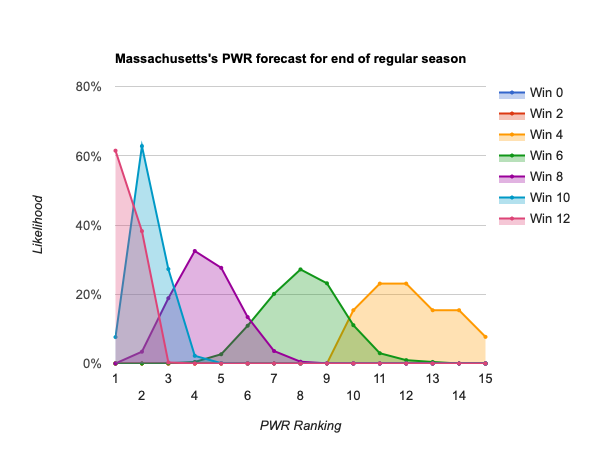Inspired by a tweet earlier this week by @JoeMeloni, I thought it would be fun to look into the season’s most impactful games on the PWR.
I think this is going to be fun, because I think a lot of people think that the relative stability of the PWR (check out PWR historical charts) also implies that individual games are unlikely to effect huge movements in PWR. In reality, in every weekend’s forecasts I see teams that have the potential to move up or down 10+ spots in PWR based on the weekend’s performance. The relative stability instead comes from teams performing about the same over the course of the season (that is, a team with an 80% win percentage is most likely to win around 80% of its remaining games, thus maintaining a relative stable PWR; if that team instead wins 20% over a significant stretch, its PWR would plummet). That’s why this site’s PWR forecasts focus not just on a team’s most likely future PWR (which, frankly, is probably its current PWR), but on the team’s most probable future PWR depending on its own future performance (such as, what will its PWR be if it only wins half its remaining games instead of the expected 80%?)
Without further ado, here are some of this season’s most significant games from a PWR perspective. To do further investigation yourself, verify the impacts of these changes, or just have fun exploring how volatile PWR really can be, check out the PWR Calculator I unveiled last season:
PWR Calculator
Biggest PWR impact if the game had gone the other way
#36 Dartmouth — Could be #45 (9 spots lower) if Dartmouth had instead lost the February 15 1-0 victory at Clarkson
#44 Nebraska-Omaha — Could be #35 (9 spots higher) if UNO had instead won an October 13, opening weekend, 4-5 loss at Union
#45 Michigan Tech — Could be #36 (9 spots higher) if Michigan Tech had won either of its 1-3 losses at Clarkson on Nov 16-17
Biggest PWR impacts for potential NCAA tournament teams
Ok, those were some big impacts for one game being different! But lower ranked teams tend to be more volatile, and those didn’t really have any impact on the NCAA tournament (which is what PWR is for). But, there are also plenty of examples of single game outcomes potentially having a significant impact on NCAA tournament selection.
#8 Arizona St — Could be #14 (6 spots lower, and firmly on the NCAA tournament bubble with no additional games to play) if the November 3 win over Penn St, 4-3, had instead gone the other way
#10 Clarkson — Could be #14 (4 spots lower, and pushed to the bubble) if Minnesota-Duluth had instead taken the December 29 holiday tournament game won by Clarkson, 3-1
#20 North Dakota — Could be #14 (6 spots higher, on the bubble, and arguably in control of their own destiny) if the Fighting Hawks had taken either game in the Nov 16-17 sweep by Western Michigan
#13 Harvard — Could be #8 (5 spots higher, and in solid position for an at-large bid) if the Crimson had instead taken the 6-7 season opening loss at Dartmouth. But, they could also be #18 (5 spots lower, and outside the bubble) if they had instead lost a 2-1 victory at Quinnipiac on January 12.
#19 Union — Could be #14 (5 spots higher and on the bubble) if they had instead won either of the October 26-27 home and away series vs Rensselaer
#14 Western Michigan — Could be #10 (4 spots higher and in good shape for an at-large bid) if they had won the season opener that they lost 2-6 hosting Bowling Green (winning the October game at Bowling Green wouldn’t have helped quite as much). But, they could also be #20 (6 spots lower, and off the bubble) if they had instead lost in the 5-4 victory hosting Michigan on October 20.
#16 Penn State — Could be #12 (4 spots higher and in a much better position on the bubble) if they had won the 3-4 home loss to Arizona St on November 3
#12 Cornell — Could be #8 (4 spots higher and in good shape for an at-large bid) if they won either game of their season opening series hosting Michigan St
#21 Minnesota — Could be #17 (4 spots higher and much closer to the bubble) if they had won either game of the November 2-3 home and away series vs Minnesota St
Most interesting PWR impacts on teams not involved in the game
Some noticeably different PWR outcomes are even possible for teams based on games completely outside their control.
#20 North Dakota — Could be #16 (4 spots higher and much closer to the bubble) if Nebraska-Omaha had won either game in its October 19-20 home series hosting Notre Dame
#45 Michigan Tech — Could be #41 (4 spots higher) if Northern Michigan had won either of its November 9-10 losses hosting Cornell
#37 Boston College — Could be #41 (4 spots lower) if Sacred Heart had won either of its season opening losses hosting Northeastern
Some games have impacts on non-participants that, while relatively smaller than those above, have significant playoff implications.
#9 Providence — Could be #12 (3 spots lower and much closer to the bubble) if Harvard had instead won in its 1-2 Beanpot loss to Boston College on February 4
#8 Arizona St — Could be #11 (3 spots lower and much closer to the bubble) if Massachusetts had instead prevailed in their 1-3 loss to Ohio State on October 20
#2 Massachusetts — Could be #1 if games outside their control had gone differently, for example if Northeastern had prevailed either of its games hosting Union on October 19-20
